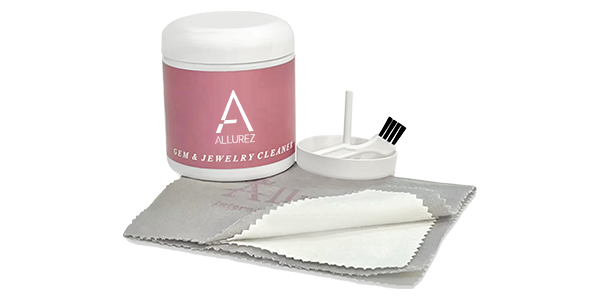Free Insured 2 Day Shipping On Orders $100+
MENU
CURRENCY
Named by  as America's best customer service 2025 | 5 Years in a Row
as America's best customer service 2025 | 5 Years in a Row
 as America's best customer service 2025 | 5 Years in a Row
as America's best customer service 2025 | 5 Years in a Row
Stone settings are an important characteristic of jewelry. The stone setting for various types of jewelry will determine how well a stone reflects light. In addition, they determine how a particular piece of jewelry will look. Stone settings are largely a matter of personal taste.
Here are some popular setting types for gemstone jewelry and diamond jewelry:
The most popular type of setting used for jewelry. This is largely due to the fact that the prong setting uses very little metal to hold the stone in place. This type of setting usually features four or six prongs that are bent at the edge to snugly fit the stone in place while forming a basket shape underneath. This style sets the stone high and is ideal for anyone who wants their stone to reflect the most amount of light from top to bottom. It is especially popular to display Solitaire Engagement Rings with this setting.
In a bezel setting, a valuable metal is wrapped around a precious gemstone. This was the earliest method of attaching stone pieces to jewelry. Jewelry designs with this type of stone setting have a very traditional look attached to them. The wide selections of Bezel Set Necklaces that are available on the market today are a testament to the fact that it is one style that is here to stay.
Pave settings are used to mount diamonds and other gemstones that are round cut. With this setting, jewelers make numerous imprints on the metallic surface that will hold the gemstone. A jeweler will fashion small prongs that will hold the jewelry in place very discreetly. The result is that very little of the metal is seen and the reflective properties of the stone become more prominent. This type of stone setting is seen in bracelets, earrings, and pendants. However, Pave Set Rings are a more common form of jewelry that has this setting.
A variation of the pave setting is the micro-pave setting which utilizes microscopes to secure very small gemstones in place. This style of jewelry is less common than the pave setting. Nonetheless, Micro-Pave Stackable Rings are very stylish and unique.
The channel setting utilizes two bars to secure gemstones in place. The bars are narrower than the gemstone in order to secure it in place. Some jewelers fashion them to be narrower at one end as a style, but many Channel Set Anniversary Rings feature bars that run completely parallel with stones present all around the ring. The advantage of channel settings are that the stones are attached together and that there is no metal running between the stones, with the exception of the parallel bar that holds them in place on each side. This allows the stones to have a unique look.
The bar setting is only used for gemstones that are very hard. Although it is more commonly seen in Diamond Wedding Bands and Engagement Rings, ruby, sapphire, and emerald all have a hardness that allows jewelers to set these stones in this manner. With this method of stone setting, jewelers wedge bars with grooves between gemstones in order to hold them in place.
The burnish setting is usually found in contemporary wedding band designs. Burnish setting diamond bands have a very unique look in that they limit the amount of light that the gemstone reflects. This is due to the fact that the jeweler will sink the stone into the metal in such a way that others will mainly see the top surface of a gemstone. This style has gained popularity recently and may only become more common as time goes on.
As its name suggests, invisible settings are a style in which the mountings of a gemstone are not visible to the naked eye. Invisible setting rings, earrings, necklaces and pendants usually appear to hold a floating set of gemstones. In this setting, grooves are cut below the girdle of each gemstone, which is then fit into a metal framework that remains hidden. Although invented two centuries ago, it did not gain popularity until the 1990s.
Whatever stone setting you choose, ask yourself these questions: Do you want your gemstone to reflect the most amount of light? Do you want a setting that is strong enough to keep your stones together over the years? Does a particular setting have the look you are going for? Consider these and many other things before selecting a stone setting.